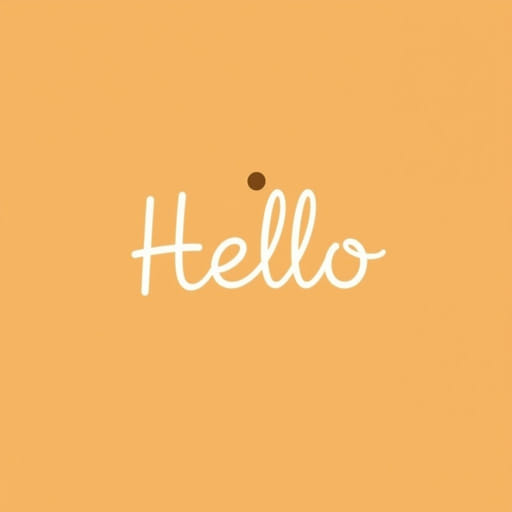What Is Hello In Tswana
Understanding how to say ‘hello’ in different languages can be both fun and educational, especially when exploring African languages such as Tswana. Tswana, also known as Setswana, is one of the official languages of Botswana and is also spoken in parts of South Africa and Namibia. As a Bantu language, Tswana has unique greetings and expressions that reflect the culture and traditions of the people who speak it. Learning how to say ‘hello’ in Tswana is more than just memorizing a word it involves understanding when and how greetings are used in daily life.
Common Greetings in Tswana
How to Say Hello in Tswana
The most common way to say ‘hello’ in Tswana is‘Dumelang’. This greeting is used when addressing more than one person. When greeting a single person, the correct word is‘Dumela’. These greetings are used throughout the day and are appropriate in both formal and informal settings.
- Dumela Hello (to one person)
- Dumelang Hello (to multiple people)
Both forms come from the Tswana root worddumela, which means ‘believe’ or ‘trust.’ In this cultural context, saying Dumela can be interpreted as I believe in you or I acknowledge your presence, making it a warm and respectful way to begin a conversation.
Politeness and Social Context
The Importance of Greetings in Tswana Culture
In Tswana-speaking communities, greetings are deeply important. A conversation that does not begin with a proper greeting can be considered rude or disrespectful. When entering a home, starting a conversation, or meeting someone for the first time, it’s customary to greet them using ‘Dumela’ or ‘Dumelang.’
Additionally, greetings are often accompanied by a handshake or a nod, depending on the familiarity and social setting. In formal contexts or with elders, people may bow their heads slightly as a sign of respect.
Variations Depending on Time of Day
While ‘Dumela’ and ‘Dumelang’ are all-purpose greetings, there are also time-specific ways to greet someone in Tswana. These include:
These expressions add nuance and warmth to daily interactions. While not necessary in casual contexts, using them can make you sound more natural and respectful when speaking with native speakers.
Tswana Greeting Etiquette
Showing Respect Through Language
In Tswana culture, respect for elders and community is reflected through speech. When greeting someone older or in a position of authority, it’s respectful to use appropriate titles or honorifics. Although ‘Dumela’ is a standard greeting, tone and body language also play a role in how the greeting is received.
Responding to Greetings
When someone says ‘Dumela’ to you, the correct response is to repeat ‘Dumela’ or ‘Dumelang’ back. This simple exchange sets a tone of mutual acknowledgment and politeness. In some areas, people may add a friendly ‘O kae?’ meaning ‘How are you?’ to extend the greeting further.
- Dumela!
- Dumela, o kae? Hello, how are you?
- Ke teng, wena o kae? I’m fine, and you?
These follow-up questions help build a sense of connection and are part of the expected flow of conversation in Tswana-speaking communities.
Language and Identity
The Cultural Role of Tswana
Tswana is more than just a method of communication it’s a cultural identity. Greeting someone in Tswana, even if you’re not a native speaker, is often met with appreciation. It shows an effort to understand and participate in the local culture, which is especially important in areas like Botswana where Tswana is both a national and cultural language.
Tourists, expatriates, and students who learn basic greetings like ‘Dumela’ can often create warmer connections with locals and navigate social situations with more ease. It also shows respect for local customs, which is valued in many parts of southern Africa.
Comparisons with Other African Greetings
Like Tswana, other African languages place a strong emphasis on greetings. For example:
- Zulu: Sawubona (Hello singular), Sanibonani (plural)
- Xhosa: Molo (Hello singular), Molweni (plural)
- Swahili: Jambo or Hujambo (Hello)
Each language has its own structure, but all share a common value: respect and acknowledgment through proper greetings. Learning hello in different African languages helps highlight the diversity and richness of the continent’s linguistic heritage.
Helpful Phrases in Tswana
Expanding Your Vocabulary
If you’re learning Tswana or planning to visit a Tswana-speaking region, it’s useful to know a few other basic expressions that often follow a greeting:
- O kae? How are you?
- Ke teng I’m fine
- Leina la me ke… My name is…
- Ke kopa Please
- Ke a leboga Thank you
These simple phrases go a long way in everyday interactions and can help you make a positive impression when speaking with Tswana speakers.
Knowing how to say ‘hello’ in Tswana using ‘Dumela’ or ‘Dumelang’ is more than just learning a word. It’s about understanding the cultural significance of greetings and how they reflect values like respect, hospitality, and community. Whether you’re traveling to Botswana, engaging with Tswana speakers in South Africa, or just expanding your knowledge of African languages, mastering this greeting is a great place to start. And as with any language, a simple hello can open the door to meaningful connections and cultural appreciation.
